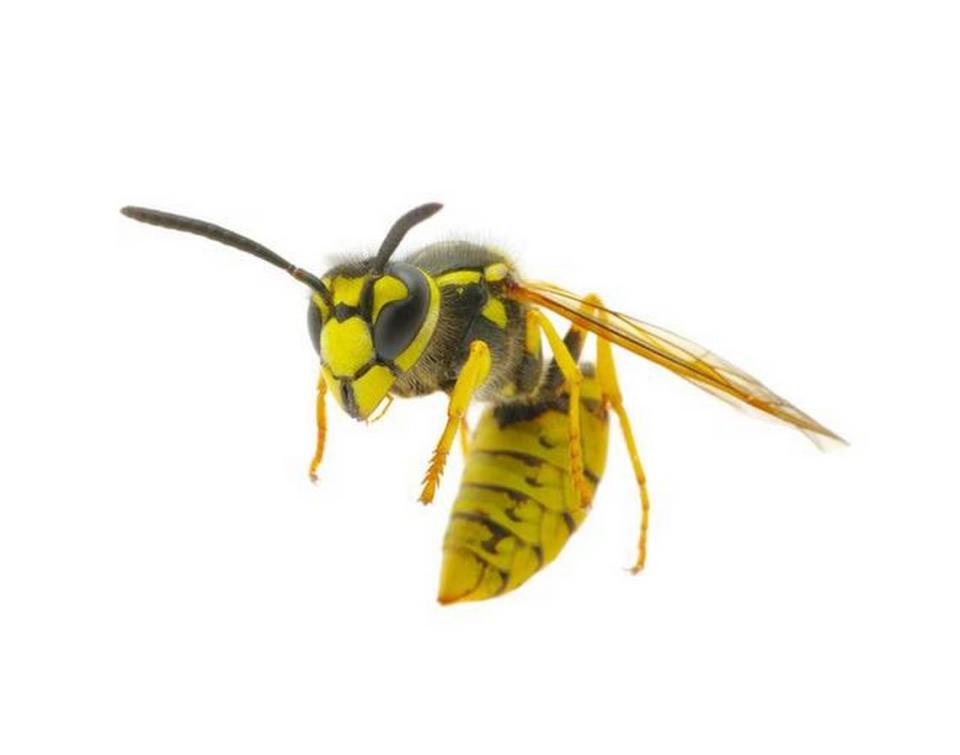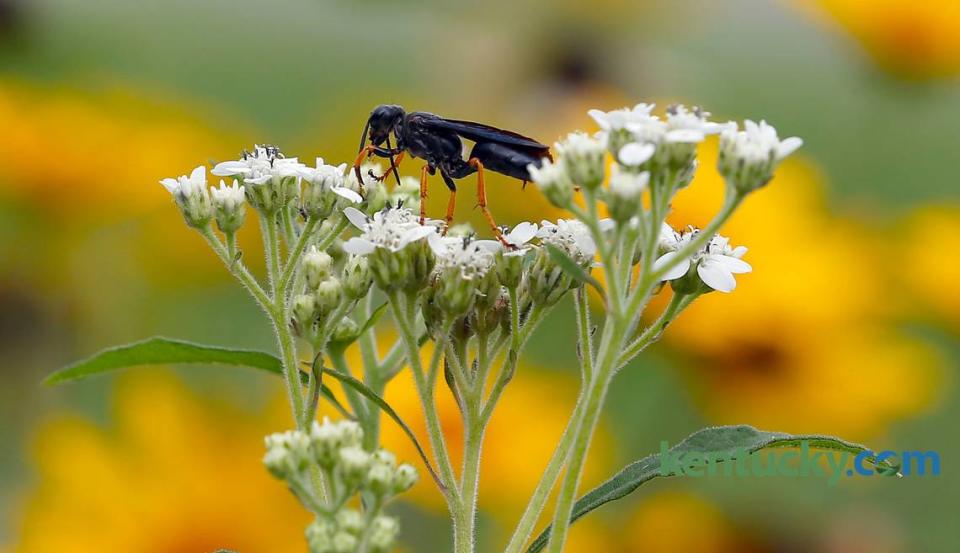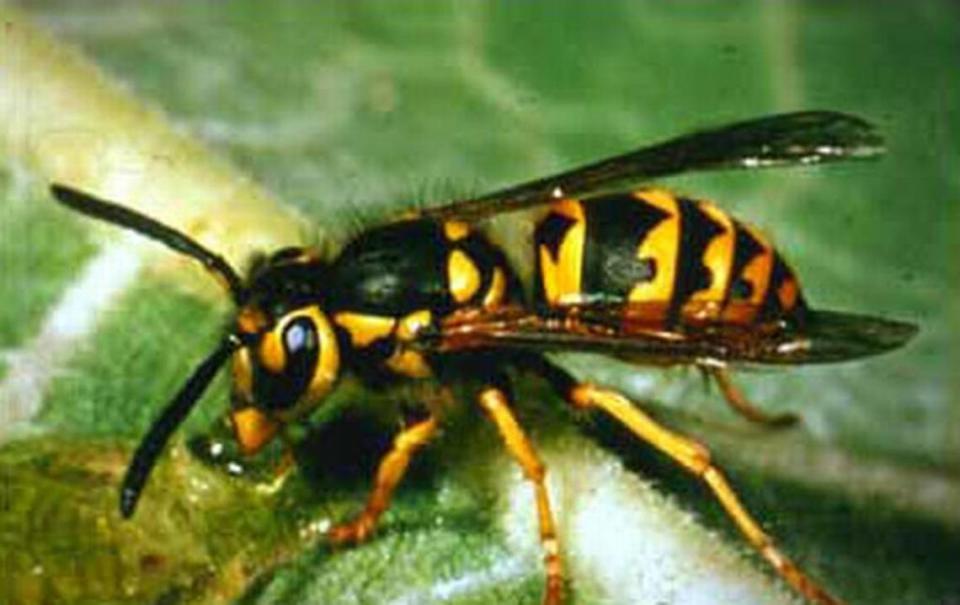Dodging yellowjackets? Here’s how to make sure wasps don’t ruin your Kansas summer
If you’ve been outside recently, you likely have come across a common summer nuisance: wasps.
While different kinds of wasps become active at different times of the summer, there are some varieties that are already building their nests for the season.
Their nests are either exposed, found on the ground or hidden. Exposed are the easiest to take care of and are usually found on the side of structures or hanging visibly from a tree. Ground nests are harder to spot as the only part of the nest that’s visible is the opening, with the only giveaway being the wasps flying in and out.
Hidden wasp nests, sometimes tucked inside buildings, can be among the hardest to spot and remove.
Here’s what to know about common wasps in Kansas and how to get rid of them if they build a nest near your home.
What wasps are common in Kansas?
Right now, you may be able to spot several species, including paper wasps and mud dauber wasps.
Paper wasps are known for their nests, which are made of a paper-like material, according to the National Pest Management Association. The insects themselves are a shade of brown with yellow markings.

In all, 22 types of paper wasps can be found across the U.S. Their stings are known to be painful and can cause allergic reactions as the sting site usually becomes red and swollen.
Mud dauber wasp’s nests are made out of mud, according to the NPMA. Found throughout the U.S., mud daubers are usually black with pale markings. This variety doesn’t usually sting, and they are known to not be aggressive.

Late in the summer, the yellowjacket will appear in Kansas, and entomology professor Raymond Cloyd, Ph.D., with Kansas State University, said they are an aggressive variety.
“[The yellowjacket] is probably the most aggressive and deadly wasp we deal with because it chases people around and [it inflicts] multiple stings ... people can have severe allergic reactions to it,” Cloyd said.
The yellowjacket moniker refers to a variety of different kinds of wasps, including the western yellowjacket, which is the most common, and eight other species. Yellowjackets are black with yellow patterns and are usually medium in size.

You might also come across the bald-faced hornet this summer. You can identify this type of wasp by its large, black body and mostly white-patterned face, according to the NPMA. These can also be aggressive.
Other than the yellowjacket and bald-faced hornet, most wasps you will come in contact with this summer aren’t aggressive to humans.
“I know there’s still fear, but most of them are beneficial. They are collectors of other insects, primarily caterpillars,” Cloyd said. “They’re only going to be provoked to sting you if they’re threatened ... that’s why you just kind of leave them alone.”
How to get rid of wasp nests around your Kansas home
Wasps build their nest in a variety of places, including the sides of houses and accessory structures, old burrows and in trees and shrubs. While most wasps aren’t dangerous unless provoked, sometimes it is best to get rid of a nest if it is near a location people gather or children play.
If a wasp nest is attached to your house, the best way to get rid of it is to call a pest management professional.
If you want to do it yourself, Cloyd says to buy a spray and saturate the nest at night, when the wasps are inside sleeping. The insects will be dead by morning, and you can then safely remove the nest.
Those feeling particularly daring can knock off the nest in the evening, seal it in a plastic bag and put it in a sunny area.
When dealing with aggressive species, like the bald-faced hornets or yellowjackets, it’s best to either leave the nest alone or call a professional to avoid any reactions.
When getting rid of a wasp nest, don’t spray or plug up the opening, the University of Minnesota Extension recommends.
What to do if you get stung by a wasp
While most wasps aren’t aggressive, it’s still possible to receive a sting if you make the insect feel threatened. If you do, don’t worry, most insect stings can take care of themselves.
Here are some at-home tips to treat a sting, from the Mayo Clinic:
Wash the sting with soap and water
Apply ice or a dampened wash cloth to the sting
Take an over-the-counter anti-itch/allergy medication
Take an over-the-counter pain reliever if needed
Apply calamine lotion, baking soda paste or 0.5% of 1% hydrocortisone cream.
Severe allergic reactions to wasps are possible. If you are having trouble breathing, experience dizziness, an irregular pulse, hives or swelling of the lips, face, eyelids or throat, call 911 or seek care from a medical professional.

